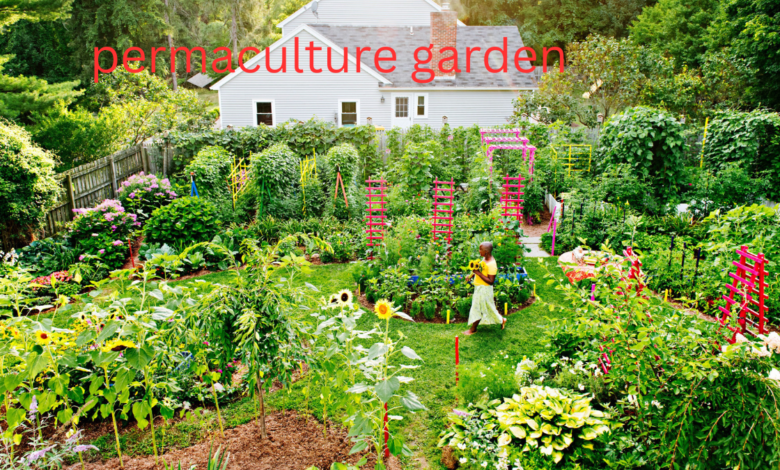Permaculture Garden: The Ultimate Guide to Sustainable Gardening

Introduction to Permaculture Gardening
Are you ready to transform your gardening experience and embrace sustainability? Permaculture gardening offers a unique approach that harmonizes with nature while cultivating vibrant gardens. Imagine growing fresh produce, nurturing biodiversity, and creating a thriving ecosystem right in your backyard. This is more than just planting seeds—it’s about fostering a relationship with the land that supports both your needs and the environment’s.
Whether you’re an experienced gardener or just starting out, this ultimate guide will walk you through everything you need to know about permaculture gardening. From understanding its core principles to designing your own sustainable oasis, we’ll explore how you can create a flourishing garden that benefits not only you but also future generations. Let’s dive into the world of permaculture together!
Principles and Ethics of Permaculture
Permaculture is built on a foundation of principles and ethics that guide sustainable practices. Central to its philosophy are the core values of care for the earth, care for people, and fair share. These pillars foster a harmonious relationship between humans and nature.
Understanding these principles means recognizing patterns in ecosystems. Observing natural processes can inspire effective designs that mimic nature’s efficiencies.
Furthermore, permaculture emphasizes low-energy input methods. This encourages regenerative practices rather than depleting resources. It promotes biodiversity through polyculture systems, enhancing resilience against pests and diseases.
Ethics play an essential role as well; they encourage stewardship over exploitation. By prioritizing community needs alongside environmental health, we create spaces that nourish both our planet and ourselves.
Embracing these ideas leads to more thoughtful gardening approaches where every action counts towards sustainability.
Designing Your Permaculture Garden
Designing your permaculture garden is an exciting journey. Start by observing the natural landscape of your space. Take note of sunlight patterns, wind directions, and existing flora.
Consider zones in your layout. Place frequently accessed herbs and vegetables close to your home for convenience. Position plants with similar needs together for efficient resource use.
Incorporate diverse plant species to create a resilient ecosystem. Companion planting can deter pests while improving growth rates. Don’t forget about vertical gardening; it maximizes space and enhances biodiversity.
Utilize natural contours for water management. Swales or terraces can help retain moisture and reduce erosion effectively.
Integrate elements like pathways, seating areas, or wildlife habitats into the design. Every detail contributes to a vibrant environment that thrives on cooperation rather than competition. Embrace creativity as you shape a sustainable haven!
Choosing the Right Plants for Your Climate
Selecting the right plants is crucial for a thriving permaculture garden. Understanding your local climate sets the foundation for success.
Start by researching native species. These plants are naturally adapted to your region and often require less care. They can resist pests better and thrive with minimal intervention.
Consider microclimates in your space, too. Areas near walls may retain heat, while shaded spots could support different varieties. Take note of sunlight patterns throughout the day.
Don’t forget about seasonal changes. Choose crops that flourish at various times of the year to maximize harvests across seasons.
Think biodiversity! Mix edible plants with flowering ones. This attracts beneficial insects and enhances pollination, contributing to a healthier ecosystem within your garden setup.

Building a Sustainable Water System
Water is essential for any garden, especially in a permaculture system. Designing a sustainable water system ensures that your plants thrive while conserving this precious resource.
Start by observing how water naturally flows on your property. Identify high and low spots to create swales or berms. These features help capture rainwater and direct it where needed most.
Consider installing rain barrels to collect runoff from roofs. This stored water can be used during dry spells, reducing reliance on municipal supplies.
Integrating drip irrigation is also effective. It delivers moisture directly to plant roots, minimizing evaporation and waste.
Encourage the presence of native vegetation around your garden beds. They will not only improve soil retention but also promote biodiversity within your ecosystem.
Composting and Soil Health in Permaculture
Composting is a cornerstone of permaculture gardening. It transforms kitchen scraps and yard waste into rich, fertile soil. This process mimics nature’s cycles, turning organic matter back into the earth.
Healthy soil teems with life. Microorganisms break down materials, creating nutrients that support plant growth. In a permaculture garden, this living soil enhances biodiversity and resilience.
Start your compost pile in a well-drained area with layers of greens (nitrogen-rich) and browns (carbon-rich). Regularly aerate the pile to speed up decomposition.
Using compost improves water retention in dry climates while preventing erosion in wet areas. The result? A thriving ecosystem where plants flourish naturally.
Incorporating mulch also supports soil health by regulating temperature and moisture levels. With these practices combined, your permaculture garden will thrive sustainably for years to come.
Maintaining and Harvesting from Your Permaculture Garden
Maintaining your permaculture garden is an ongoing journey. Regular observation helps you understand the unique dynamics of your ecosystem. Watch for signs of plant health and pest activity.
Mulching plays a crucial role in keeping moisture levels stable. A layer of organic material not only suppresses weeds but also enriches the soil as it breaks down.
When it comes to harvesting, timing is key. Pick fruits and vegetables at their peak ripeness for maximum flavor and nutrition. This practice encourages more production throughout the growing season.
Engaging with your plants fosters a deeper connection to nature’s cycles. Don’t hesitate to experiment with different techniques or crops based on what you observe over time.
Leave some produce on the plant for wildlife or allow certain seeds to drop back into the soil, promoting natural regeneration in your garden community.
Examples of Successful Permaculture Gardens
Many inspiring examples of successful permaculture gardens exist around the world. One notable project is the Permaculture Research Institute in Australia. This garden showcases integrated systems that yield food, enhance biodiversity, and conserve water.
In urban settings, small-scale permaculture gardens are proving effective too. For instance, many community gardens incorporate permaculture principles to transform neglected spaces into productive oases for local residents.
Another remarkable example is the La Selva Biological Station in Costa Rica. Here, a rich tapestry of native plants supports wildlife while providing sustainable food sources for researchers and visitors alike.
These diverse projects illustrate how adaptable permaculture can be across different environments—urban or rural—and climates. They also demonstrate how communities can come together to promote sustainability while enjoying nature’s abundance right at their doorstep.
The Benefits of Permaculture Gardening for the Environment
Permaculture gardening offers numerous environmental benefits that resonate with eco-conscious individuals. One of the most significant advantages is biodiversity. By integrating various plants, you create habitats that support a wide range of wildlife, from pollinators to beneficial insects.
Soil health improves dramatically in permaculture systems. The emphasis on natural composting and mulching enhances soil structure and fertility while reducing erosion. This leads to healthier plants with fewer pests.
Water conservation also plays a vital role in permaculture gardens. Techniques like swales and rainwater harvesting reduce reliance on municipal water supplies and promote efficient use of resources.
Moreover, these gardens act as carbon sinks, absorbing CO2 from the atmosphere. By fostering local food production, you cut down on transportation emissions associated with store-bought produce.
Embracing permaculture gardening means nurturing not just your garden but also the planet itself.
Conclusion
Creating a permaculture garden is more than just planting seeds; it’s about fostering a harmonious relationship with nature. By understanding the principles and ethics of permaculture, you can design an ecosystem that thrives sustainably. Choosing native plants suited to your climate not only enhances biodiversity but also reduces maintenance.
Implementing effective water management techniques ensures your garden remains resilient during dry spells. Composting enriches the soil, promoting healthy plant growth while minimizing waste. Regular maintenance and mindful harvesting contribute to a flourishing garden year after year.
The examples of successful permaculture gardens worldwide serve as inspiration for anyone looking to make their own sustainable impact. The benefits extend beyond individual gardens; they ripple through communities and ecosystems, enhancing biodiversity, improving soil health, and reducing environmental footprints.
Embracing permaculture gardening means becoming part of a larger movement toward sustainability. It’s an ongoing journey filled with learning opportunities and rewards—both personal and ecological. Start small or dive in deep; each effort contributes to a healthier planet for future generations.




